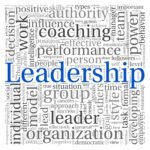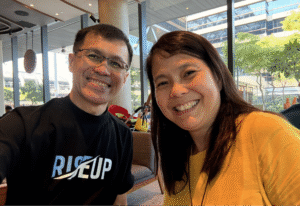When Joseph Wong, founder of RiseUP Global, met Juliana Ang, former Chief Human Resources Officer at Venture and Income, their exchange went far beyond leadership theory.
Juliana had led large-scale transformations and shared insights that redefined what effective leadership looks like in an era of complexity and constant change.
Her key message was simple: the best leaders lead intentionally — with clarity, courage, and compassion.
The ability to cultivate awareness, clarity, and intentionality is essential for leaders who want to create lasting impact.
There are different perspectives on what intentional leadership means and why it matters, reflecting the varied ways leaders interpret and apply this approach.
Intentional leadership is that very practice — leading with awareness, empathy, and purpose so every decision and interaction supports both progress and people.
A leader’s belief system fundamentally shapes their approach, influencing attitudes, behaviors, and overall effectiveness.
Emotional intelligence is also a foundational quality for intentional leaders, enabling self-awareness and meaningful connections. It’s not about control; it’s about conscious direction.
What You’ll Learn in This Article:
- What intentional leadership means and why it matters today
- What makes leaders intentional: 5 core traits and habits
- What happens when organizations adopt intentional leadership
- Real-life examples of intentional leadership in action
- Practical steps to become an intentional leader
- Common questions about practicing intentional leadership
What Is Intentional Leadership?

Intentional leadership is the practice of leading with deliberate awareness, empathy, and purpose. It means every decision, message, and behavior stems from clarity rather than reaction.
“Don’t overcomplicate transformation,” Juliana Ang shared. “Focus on what truly matters — clarity, connection, and courage.”
Intentional leaders slow down to ask why, communicate transparently, and anchor every action to a meaningful outcome.
They adopt specific mindsets that shape their approach to leadership, recognizing that mindsets rooted in research influence perceptions and outcomes.
A leader’s core beliefs play a fundamental role in shaping their decisions and actions, directly impacting organizational culture and team success.
Intentional leaders also consider the circumstances they face, responding thoughtfully rather than reactively.
Reflective thinking is central to their process, allowing them to lead with presence and direction, which often matter more than speed or authority.
Intentional leaders work to develop their own capacity and the capacity of their teams, fostering an environment where everyone can grow and thrive.
Want to explore your own leadership style? Start with The Influence Book by Joseph Wong — a guide that helps you unlock influence through clarity and purpose. Remember, developing intentional leadership skills is an ongoing process that requires continuous effort and commitment.
What Sets Intentional Leadership Apart?
Traditional Leadership | Intentional Leadership |
Focuses on targets & tasks | Focuses on people & purpose, while managing each task with intention and clarity |
Reacts to problems | Anticipates with clarity and a clear vision |
Measures only performance | Measures growth and alignment |
Commands compliance | Cultivates commitment |
Operates by hierarchy | Operates through connection |
Intentional leaders operate with a clear vision that guides their actions and decisions, ensuring every task aligns with organizational goals.
By aligning purposeful actions with clear objectives, intentional leaders accomplish more meaningful outcomes. This approach helps teams achieve their goals and organizational objectives more effectively.
In short, traditional leadership drives output; intentional leadership creates impact and is a key driver of long-term success.
If you’re ready to move from management to meaning, consider joining the Leadership Training Hub — RiseUP Global’s dedicated learning space for conscious, high-impact leadership.
What Makes a Leader Intentional
1. Clarity in Purpose
Leaders like Juliana start with why. During Venture and Income’s reorganization, she framed every update around the company’s mission and employees’ growth, making the purpose crystal clear to everyone involved.
Intentional leaders always keep the bigger picture in mind, ensuring that every action supports the company’s long-term vision and impact. Result: even amid uncertainty, teams stayed aligned because they knew why change was happening.
2. Presence in Action
Intentional leaders give undivided attention. When an employee at Juliana’s firm expressed burnout, she paused the meeting agenda, asked genuine questions, and reassigned workload — a 10-minute act that restored trust and productivity.
When leaders show intentional presence, employees feel valued and supported, which can significantly improve morale and engagement.
3. Empathy in Communication
They deliver hard news with honesty and heart.
Example: one manufacturing CEO announced plant automation by first acknowledging fear and then outlining training paths for reskilling.
The leader’s choice of words conveyed empathy and clarity, helping employees feel understood and supported. Morale rose instead of collapsing.
4. Consistency in Values
Consistency builds credibility. Teams trust leaders whose decisions mirror their stated principles, even under pressure.
Intentional leaders ensure their actions are consistently aligned with their core values, reinforcing trust and clarity of purpose within the team.
5. Growth Orientation
Intentional leaders encourage exploration. Joseph Wong calls this Talent Return-tion — creating workplaces so supportive that people leave to grow yet often return for the culture they miss.
Intentional leaders also create opportunities for leadership experiences that foster personal and professional growth.
Developing leaders, teams, and cultures through intentional and ongoing growth strategies is essential for sustained organizational success.
What Happens When Leadership Becomes Intentional?
1. People Feel Seen and Supported
Gallup (2023) found that 89% of employees stay motivated when recognition feels meaningful. Intentional leaders notice contributions publicly and coach privately, boosting belonging.
This approach also leads to higher job satisfaction, as employees feel valued and supported in their roles. Organizations with intentional leadership are more likely to attract and retain high performers who drive superior results.
2. Communication Turns Into Connection
Juliana avoided corporate jargon during restructuring. Her open Q&A sessions replaced rumor with reassurance.
By prioritizing intentional leadership, she strengthened relationships within the organization, building trust and fostering open communication.
Productivity held steady while industry peers faced mass resignations.
3. Change Feels Manageable
Intentional leaders guide transition through storytelling — clarifying what’s changing, why, and what’s next.
They see change as a challenge to be embraced and managed with purpose, turning difficult situations into opportunities for growth.
Employees interpret transformation as progress, not loss.
4. Culture Evolves from Compliance to Commitment
Once trust replaces fear, people act like owners. They propose improvements, mentor peers, and protect the culture even without supervision.
5. Performance and Well-Being Align
Because intention integrates empathy with execution, metrics improve without burnout. Intentional leadership recognizes that well-being is essential for sustained performance.
By integrating empathy, clarity, and execution, intentional leadership fosters high performance and organizational excellence.
In one retail brand Joseph Wong coached, shifting managers toward intentional check-ins cut absenteeism by 22% in six months.
Looking to build intentional culture across your organization? Join the next Superscale Your Leadership Retreat — an immersive experience for leaders ready to transform how they lead, communicate, and inspire.
What Intentional Leadership Looks Like in Practice
Practice | Description | Real-Life Outcome |
Clarify Before Acting | Begin every meeting with one clear purpose. Ensure every decision reflects right action aligned with your vision, demonstrating intentional leadership. Leaders take responsibility for ensuring actions and outcomes are intentional and aligned with organizational goals. | Cuts meeting time by 30%. |
Be Fully Present | No multitasking during one-on-ones. | Employee satisfaction scores rose 15%. |
Simplify Complex Change | Translate strategy into 3 plain messages. | Staff understood goals 2× faster. |
Model Calm Under Pressure | Keep tone steady amid crises. Intentional leaders model right action by responding purposefully, and are proactive in taking action to drive positive outcomes. They accept responsibility for their responses and the impact on their teams. | Reduced escalation calls by 40%. |
Celebrate Growth Over Tenure | Reward new skills, not just years. | Higher internal promotions. |
What You Can Do to Lead Intentionally Today
- Pause Before Reacting. Take three breaths before replying under stress; it resets tone and perspective.
- Define Meaning in Metrics. Explain how KPIs serve the mission, not the spreadsheet.
- Recognize Authentic Desire. Genuine, pure desire for growth and improvement is fundamental to intentional leadership and personal development. Aligning your desire with core values drives meaningful change.
- Ask Reflective Questions.
- Does this decision build trust?
- Does it serve the greater purpose?
- What message am I sending through this action?
- What is the second question I should ask to uncover deeper motivations? When engaging with others, seek to understand their perspective before making decisions—following Stephen Covey’s advice to “seek to understand, then to be understood.”
- Practice Forward Support. Coach teams toward next opportunities instead of revisiting old mistakes.
- Encourage Return-tion. Maintain alumni networks and open channels; returning talent brings renewed loyalty and skill diversity.
Want to apply these principles directly in your team? Explore the Leadership Training Hub for structured frameworks and toolkits that help you lead intentionally every day.
What the Future of Leadership Looks Like
The next generation of leadership isn’t defined by titles but by intent. Leadership roles are evolving, with a shift away from traditional positions toward intentional leadership development that prepares future leaders to meet new challenges.
Business leaders are increasingly expected to model intentional leadership and drive organizational transformation, shaping company culture and success. As Joseph Wong says through RiseUP Global’s mission — Better Human. Better Leader. — authentic progress starts with self-awareness.
Future leaders will:
- Prioritize clarity over charisma
- Value empathy as a strategic advantage
- Build communities, not empires
- Use technology to amplify humanity, not replace it
Organizations led this way outperform because people feel purpose-aligned, not process-bound.
Ongoing leadership development is essential to cultivate the skills and mindset needed for these evolving leadership roles.
Start your journey toward human-centered leadership. Read more on RiseUP Global to explore workshops, retreats, and leadership frameworks that elevate how you lead and connect.
Real-World Scenarios of Intentional Leadership
Scenario 1: Tech Start-Up Facing Layoffs
A founder needed to downsize 20% of staff. Instead of abrupt emails, she hosted an open forum, explained financial realities, and offered transition workshops.
Months later, several former employees returned when funding improved. This shows that leaders do not necessarily have to follow every principle to make a positive impact—sometimes even small intentional actions matter. Intentional honesty > short-term PR.
Scenario 2: Hospital Under Crisis
During the pandemic, a medical director started daily 15-minute briefings focused on gratitude and transparency. Staff anxiety dropped, error rates declined.
Intentional presence, fueled by passion and commitment, saved both morale and lives.
Scenario 3: Educational Institution Reform
A school principal introduced shared decision-making committees and personal growth plans.
The principal decided to adopt intentional leadership practices to drive engagement and innovation.
Teachers reported higher engagement and innovation in curricula. Intentional collaboration sparked renewal.
Summary: The Essence of Intentional Leadership
- Intentional leadership is a conscious, purpose-driven way of leading that blends clarity, empathy, and consistency.
- It thrives on simple truths: talk openly, stay present, support growth.
- When practiced, it transforms cultures — from compliance to connection, from retention to return-tion.
- The ultimate mark of an intentional leader isn’t authority; it’s the lasting trust they leave behind, which ultimately drives organizational growth and effective decision-making.
- Successful leaders and organizations are those that consistently practice intentional leadership, creating thriving cultures and achieving long-term results.
Ready to elevate your leadership journey? Join RiseUP Global’s transformative Superscale Your Leadership Retreat and experience what intentional, purpose-led leadership feels like in action.
Frequently Asked Questions (FAQs)
1. Why is intentional leadership important today?
Because rapid change and remote work create confusion. Intentional leadership restores clarity and trust, aligning people with purpose instead of panic.
2. How do I know if I’m leading intentionally?
You plan conversations with awareness, explain the “why,” and listen more than you speak. If people leave meetings clear and calm, you’re practicing intentionality.
3. Can intentional leadership be learned?
Absolutely. It’s a skill set — begin with reflection habits, empathy training, and feedback loops. Coaching from RiseUP Global’s Leadership Training Hub accelerates growth.
4. What are the biggest obstacles to intentional leadership?
Time pressure, ego, and lack of reflection. The antidote: schedule pauses, invite honest input, and anchor decisions to shared values.
5. How does intentional leadership affect business results?
Research shows that intentional cultures achieve up to 23% higher profitability (Gallup 2023) due to engagement, innovation, and the retention of high-trust teams.
Businesses that prioritize intentional leadership experience improved engagement, greater innovation, and higher retention, leading to stronger long-term results.

A trailblazer in humanising leadership and building high-resilience teams. As a former United Nations Peacekeeper, he leverages his high-stakes experience to redefine leadership dynamics. With a career distinguished by numerous accolades, Joseph now helps organizations thrive through a human-centric approach, enhancing performance, productivity, and workplace culture.
Related Posts
-
Start Leading By First, Stop Demotivating
I had the great opportunity to catch up with Sharad Govil, the Group CEO of…
-
The Power of Leadership Presence and Why It’s Key to Influence
Have you ever been in a meeting where one person effortlessly commands attention while others…
-
Leadership is Influence
A leader’s ability to influence people makes him/her a good or a bad leader. Influence…
-
Mastering Accountability in Leadership: A Path to Effective Leadership
In the current dynamic business environment, accountability in leadership is more than a buzzword—it’s the…











